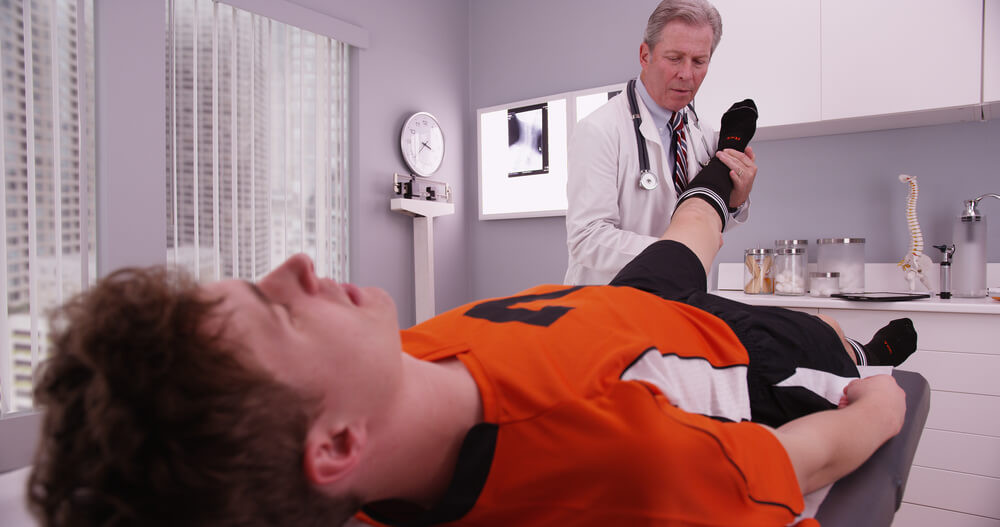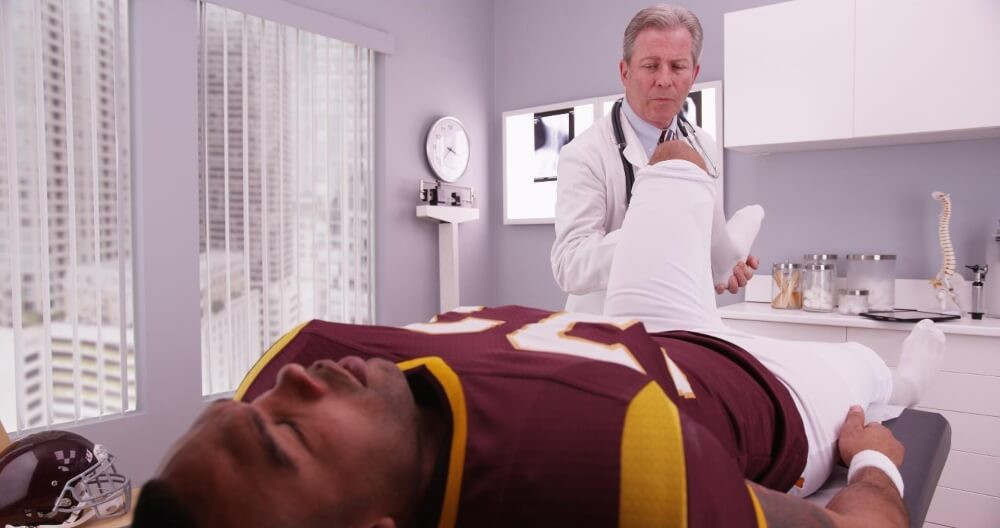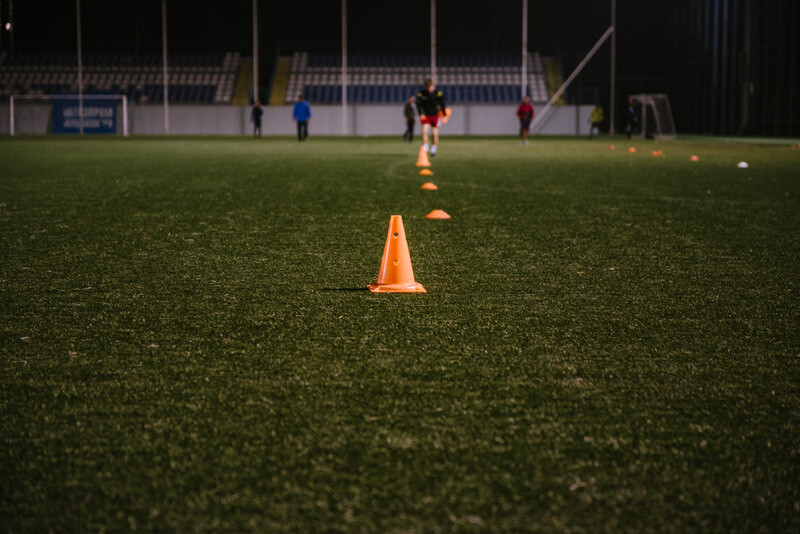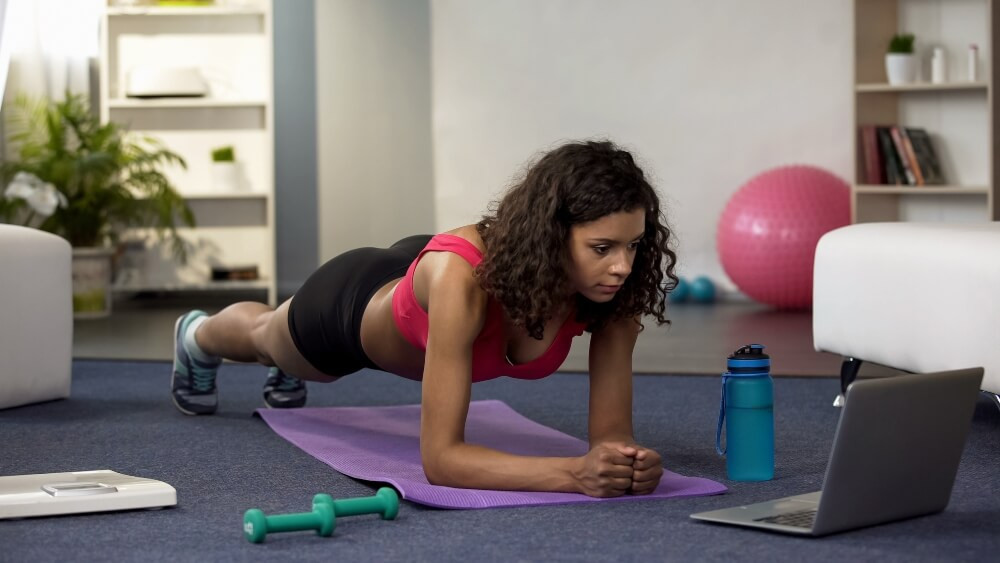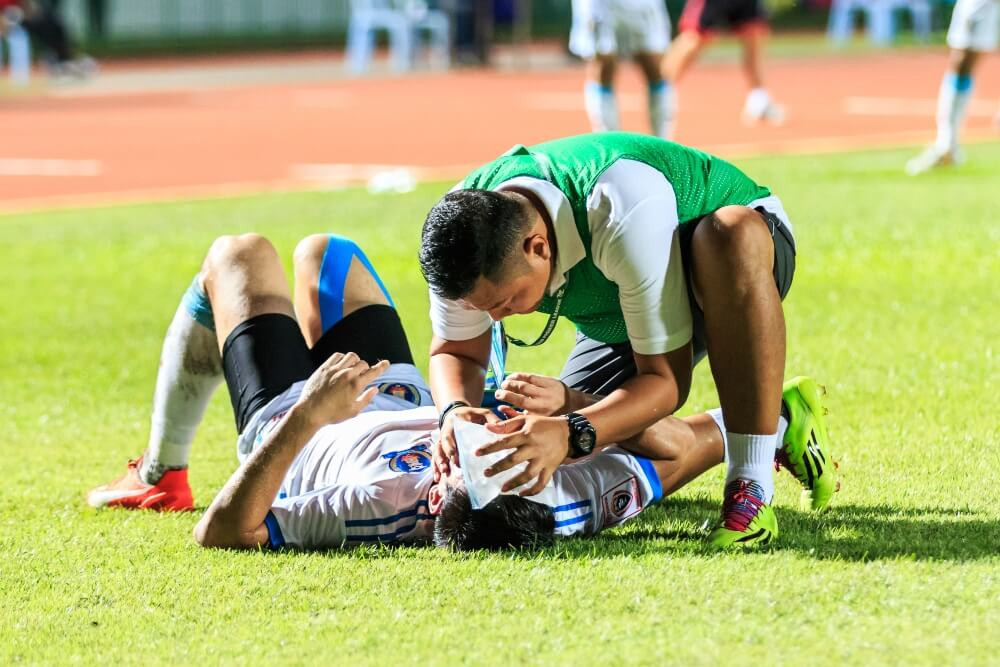Health
Welcome and thanks for visiting...

The Dreaded ACL Injury – Is There a Solution? Part IV

In the last articles, we have talked about the dreaded ACL injury (anterior cruciate ligament). One of the keys in preventing these devastating injuries is education about how they occur and how we as clinicians, coaches, parents and athletes can identify what puts an athlete at risk.
In the previous two articles, I talked about two ways we can identify those that are at risk. One is having an athlete perform a single leg squat and what we should look for when they are performing that motion. Secondly, we talked about core testing. Not only what types of core testing to do but what things we should look for when the athlete is performing the core testing.
Identifying these flaws in these movements not only help to identify those that are at risk but also give us a clear indication of what to do to prevent. In a single leg squat for example, if the athlete’s knee is going in toward midline during the performance of the test, when we train them, don’t let them do that!
Is it really that simple? Yes, it is. If your athlete cannot do 10 reps of a single leg squat without letting the knee go in towards midline, have them do as many as they can with proper form. When they can no longer control the motion and do with proper form, simply stop or better yet, regress the exercise.
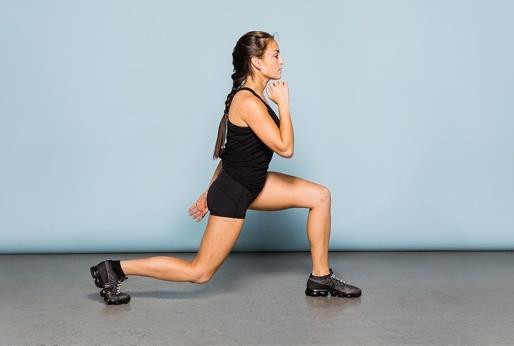
What do I mean by regression of the exercise? Simply using the same exercise but just an easier form. This allows building up of strength and endurance while pushing proper form. In a single leg squat, instead of having the opposite leg up off the ground, have them rest the opposite foot on the ground in a split squat or reverse lunge position like depicted here. This provides much more stability and is a much easier form of the exercise. Have them do this until they can no longer prevent their knee from going in toward midline. At that point stop.
The goal is always to have them do as many as they can in the single-leg squat position (with opposite foot off the ground). Using this technique, however, will not only train the proper movement pattern but also build their strength and endurance. You can take this exact same approach with the core movements well. Focus on technique and constantly progress to push strength and endurance with.
The last movement we will discuss on evaluating is the squat. Why the squat? One of the number one reasons is that we know that athletes who improve their performance on the squatting motion will increase their vertical jump and sprint speed. Squatting motion is an excellent movement to improve explosive power. In most athletic situations, this is also a movement that most athletes will be doing as a part of their training throughout their athletic career.
To evaluate the squat, I will demonstrate a proper squat for the athlete. Verbal instruction in the motion will result in the athlete doing what you describe and NOT their natural motion. I will demonstrate with my feet shoulder-width apart and squat to a 90 degrees knee flexion. My knees will be slightly over my toes and my chest in an upright position with my arms crossed in front. I will ask the athlete to perform 20 reps in a slow and controlled fashion.
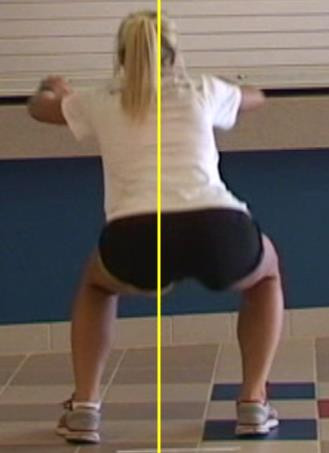 Looking at the athlete from behind, visualize (or better yet have stand in front of) a plumb line that runs through the center of the skull, cervical spine all the way down the sacrum. As the athlete performs the squatting motion, their hips should remain relatively equal distance from the plumb line. If not, then the athlete is shifting his/her weight to one side.
Looking at the athlete from behind, visualize (or better yet have stand in front of) a plumb line that runs through the center of the skull, cervical spine all the way down the sacrum. As the athlete performs the squatting motion, their hips should remain relatively equal distance from the plumb line. If not, then the athlete is shifting his/her weight to one side.
This shifting is a common motion that we first identified back in the early 2000s and we call this a lateral shift. In 2012, was the first research paper to describe this was published and the authors termed this a lateral displacement of the pelvis during a squatting motion. As we initially suspected, this lateral shift results in several things:
⦠Increase in weight distribution to the side you are shifting to
⦠Increase in EMG (muscle activation) to the side you are shifting to
⦠Increase in GRF on the side you are shifting to
There is a whole slew of additional things that occur with this shifting motion but the key is the loading is abnormal and you don’t load the way the system was designed to be loaded. With increase force on one side versus the other, this adds to wearing and tearing on that side which can add to injury.
Same time, if the muscles are more active on one side versus the other, then strength will never ever be symmetrical unless this is addressed. In addition, what we see is that if you can see this under bodyweight conditions when the athlete goes into the weight room and starts doing this under a weighted bar, this motion gets even worse. This means when squatting #225, the load on the spine, hips and lower limb is greater on one side than it is on the other. For optimal performance AND injury reduction, we must balance this out.
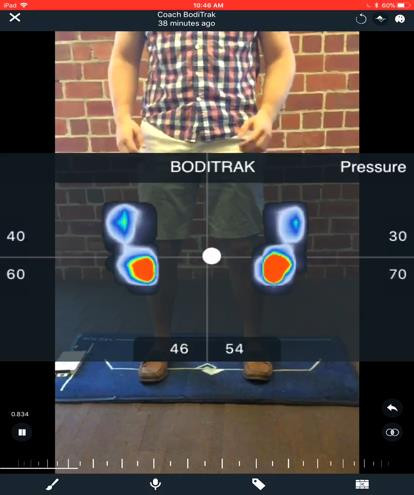 Looking at the athlete from the side view, the other motion that we look for in the squatting motion is how much flexion does the athlete get during the motion. Does their chest go down toward their knees or do they stop moving at the hips and flex forward in the spine. This motion puts a tremendous amount of load on the lumbar spine and can lead to low back injuries but also can perpetuate weakness. If an athlete has a lot of lumbar flexion during the course of the squatting motion, we know from force plate data that this brings your center of gravity forward. This can result in an increase in quadriceps activation and decreased activation of the posterior chain.
Looking at the athlete from the side view, the other motion that we look for in the squatting motion is how much flexion does the athlete get during the motion. Does their chest go down toward their knees or do they stop moving at the hips and flex forward in the spine. This motion puts a tremendous amount of load on the lumbar spine and can lead to low back injuries but also can perpetuate weakness. If an athlete has a lot of lumbar flexion during the course of the squatting motion, we know from force plate data that this brings your center of gravity forward. This can result in an increase in quadriceps activation and decreased activation of the posterior chain.
What we are looking for is more of an equal distribution of the force through the foot which means there is more natural activation of anterior chain activation to posterior chain activation. This is easily corrected with a good strength coach educating them in proper squatting technique or a sports medicine physical therapist.
In the upcoming article, we conclude this discussion by talking about fatigue state training. What is it and how do we do. I hope you found this information useful and looking forward to sharing more with you.
Read more:
The Dreaded ACL Injury – Is There a Solution?
The Dreaded ACL Injury – Is There a Solution? Part II
The Dreaded ACL Injury – Is There a Solution? Part III
The Dreaded ACL Injury – Is There a Solution? Part V

